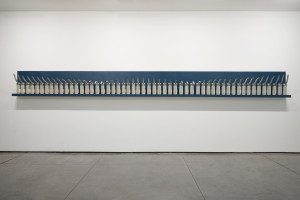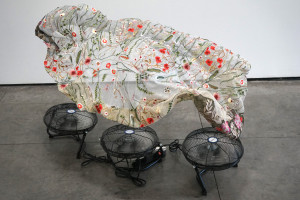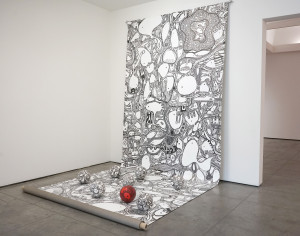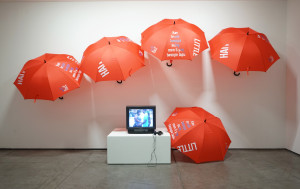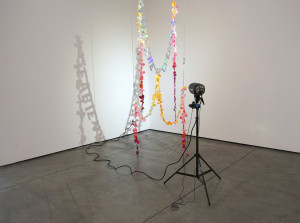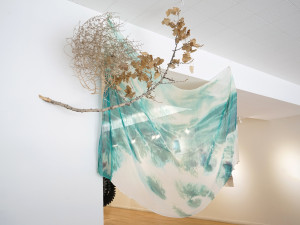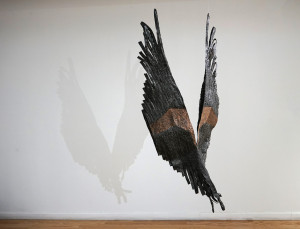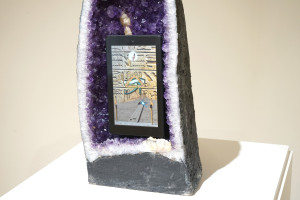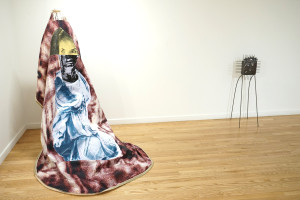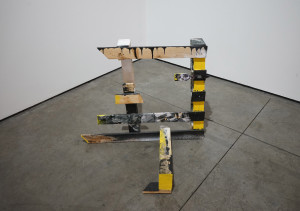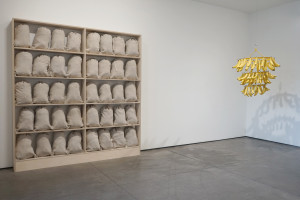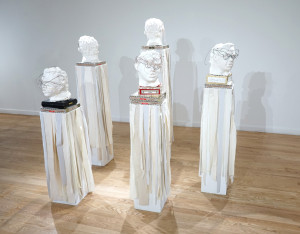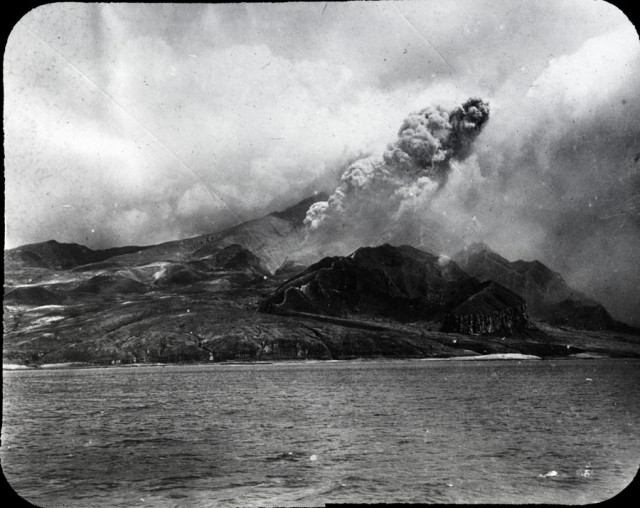
Photograph documenting the eruption of the volcano Mount Pelée in Martinique, 1902, photo courtesy of The Caribbean Photo Archive
Dust Specks on the Sea: Contemporary Sculpture from the French Caribbean & Haiti
June 19, 2021 – September 18, 2021
516 ARTS and Hunter East Harlem Gallery present Dust Specks on the Sea: Contemporary Sculpture from the French Caribbean & Haiti, curated by Arden Sherman with Marie Vickles and Katie Hood Morgan. The traveling exhibition features sculptural works by 27 artists from Guadeloupe, Martinique, French Guiana, and Haiti. It presents various approaches to subject matter, materials, and process that speak to contemporary practices by artists of this region, evincing their participation in a globalized art world and putting pressure on who is at its “center” and who is on its “periphery.”
Featured artists: Mathieu Kleyebe Abonnenc, Raphaël Barontini, Sylvia Berté, Julie Bessard, Hervé Beuze, Jean-François Boclé, Alex Burke, Vladimir Cybil Charlier, Gaëlle Choisne, Ronald Cyrille (aka B. Bird), Jean-Ulrick Désert, Kenny Dunkan, Edouard Duval-Carrié, Adler Guerrier, Jean-Marc Hunt, Nathalie Leroy-Fiévée, Audry Liseron-Monfils, Louisa Marajo, Ricardo Ozier-Lafontaine, Jérémie Paul, Marielle Plaisir, Michelle Lisa Polissaint, Najja Moon, Tabita Rezaire, Yoan Sorin, Jude Papaloko Thegenus, and Kira Tippenhauer.
In 1964, French President Charles de Gaulle visited Martinique, Guadeloupe, and French Guiana on official State business. Flying over the Caribbean Sea, de Gaulle described the islands as “dust specks on the sea.” His quote evokes an otherworldly aerial view of the Caribbean archipelago, while also revealing a deep-seated hierarchical perspective of the region, stemming from France’s history as a powerful colonizing force in the Caribbean. Dust Specks on the Sea challenges this colonial perception.
The French Caribbean is made up of two islands—Guadeloupe and Martinique—and the state of French Guiana, which sits on the northeastern edge of South America. These Overseas Departments are officially governed by, and are politically, economically, and socially connected to France. In the Greater Antilles, the nation of Haiti shares the island of Hispaniola with the Dominican Republic. In 1804, after over a decade of rebellion led by slaves, Haiti gained independence from France and forever changed the history of French sovereignty in the Caribbean.
In Dust Specks on the Sea, this history is undeniably present, but these artists are not bound to making artwork that didactically demonstrates the conditions of the region and its colonial trauma. Rather, they play all fields: expressing their personal relationships to heritage, navigating art-making in the globalized contemporary art world, and looking beyond their cultural background for inspiration and ideas.
The exhibition was generated by and debuted at Hunter East Harlem Gallery and traveled to Little Haiti Cultural Complex in Miami before coming to Albuquerque. Its development was made possible by Cultural Services of the French Embassy in the United States, Hunter College, “CUNY,” and the Direction of Cultural Affairs of Martinique and of Guadeloupe. The exhibition in Albuquerque is made possible by The National Endowment for the Arts, The Andy Warhol Foundation for the Visual Arts, The City of Albuquerque, Lannan Foundation, The FUNd at Albuquerque Community Foundation, and members of the Friends of 516 ARTS. Generous support for the artwork Bananas Deluxe by Jean-Marc Hunt has been provided by Chiquita Brands.
DOWNLOAD THE EXHIBITION CATALOG
PRESS
“Dust storm” by Michael Abatemarco for Pasatiempo/Santa Fe New Mexican
“Review: Dust Specks on the Sea at 516 ARTS in Albuquerque” by Daisy Geoffrey for Southwest Contemporary
“Historic Currents: Exhibit aims to overturn colonial bias with works from the Caribbean” by Kathaleen Roberts for the Albuquerque Journal
